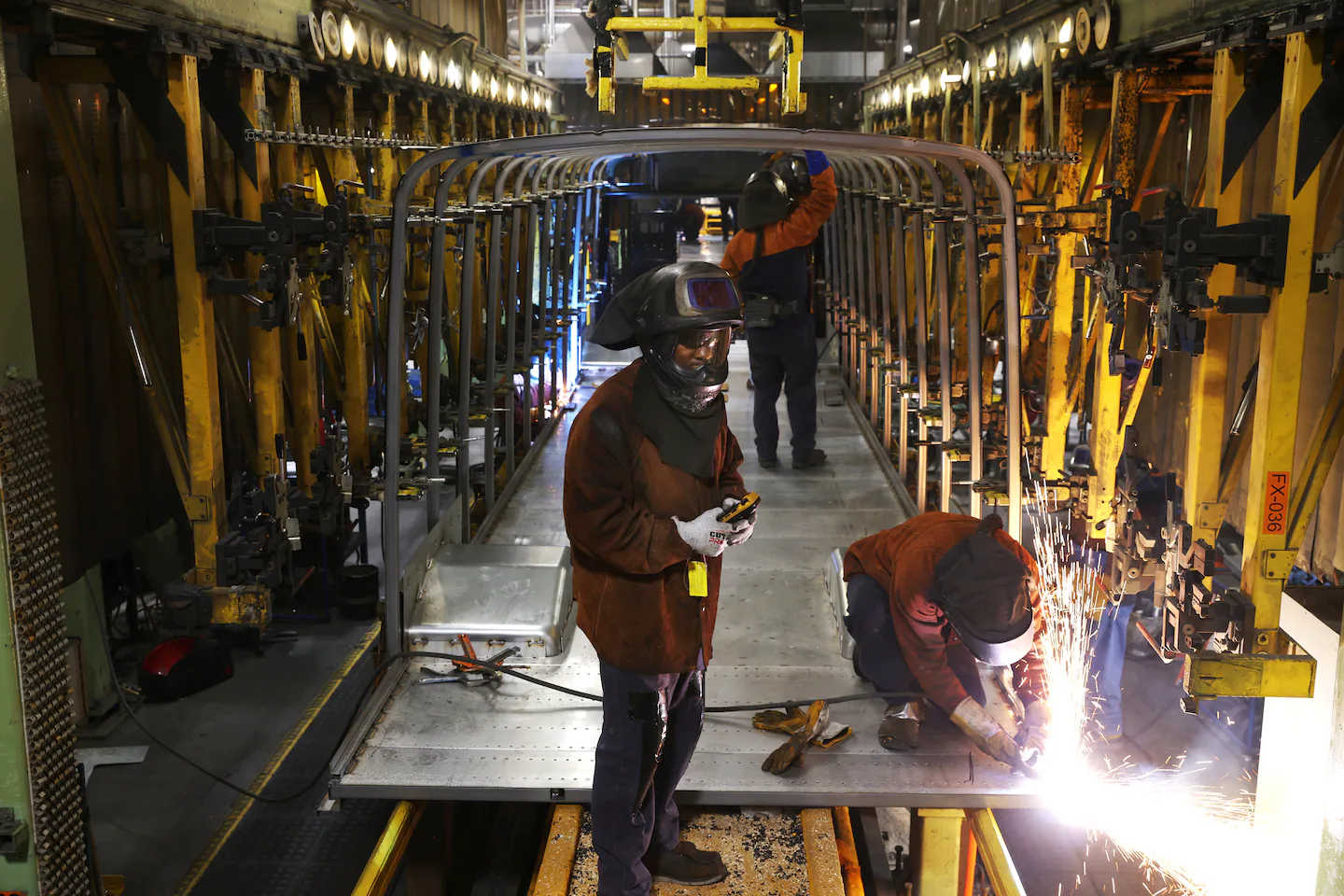Copyright The Boston Globe

The factory construction boom may be leveling off. Factory construction in the United States has increased, spurred by supply-chain disruptions during the COVID-19 pandemic and large federal subsidies for semiconductors and clean energy passed during the Biden administration. But there are signs that the boom could be fading. Spending on factory construction by all sorts of companies -- one of the clearest barometers of the “Made in America” revival -- went from around 3.5% of the manufacturing economy in 2021 to 8% in 2024, a level not seen in more than 40 years, said Paul Donovan, the global chief economist at UBS Wealth Management. Spending has declined from its peak in the third quarter of 2024, he said, although it remains high. The dip may have been partly driven by uncertainty surrounding tariffs and fears that the rising cost of imported materials would render construction projects unprofitable. Some companies canceled construction projects immediately after Trump announced tariffs on dozens of countries in April, said Michael Guckes, chief economist of ConstructConnect, a company that provides software and market insight to construction industry professionals. But building has picked up again. Nearly $86 billion was spent on manufacturing facilities from January to September, driven in part by investments in high-value semiconductor factories and pharmaceutical facilities, Guckes added. “It has been a very strong year for manufacturing,” he said. Factory jobs are declining. About 12.7 million people work in manufacturing in the United States -- a modest rebound from the pandemic’s lows. But the sector has been shedding jobs, a slow bleed that obscures deeper shifts. Some of the steepest losses came in semiconductors, auto parts and aerospace -- industries once heralded as pillars of a manufacturing revival. Many companies are in a holding pattern, wary of making big hiring or firing decisions until the dust settles on tariffs, said Thomas Derry, chief executive of the Institute for Supply Management, which surveys factory executives each month. “What we hear from our respondents, it is mostly about not backfilling positions,” he said. Mass layoffs in the sector have mostly been avoided, but an exception is Intel, which has received billions in federal funding. The domestic chipmaker is shrinking its workforce by about 25,000 employees this year. Some facilities have found it more difficult to hire or retain workers after the Trump administration revoked temporary protected status for about 500,000 Haitians, Venezuelans, Cubans and Nicaraguans. In July, more than 200 immigrants were let go from a JBS pork production facility in Iowa because they were no longer eligible to work legally in the United States. American factories have been slow to deploy robots. Despite bursts of investment in recent years, the United States trails much of the developed world in harnessing automation to boost productivity. The country ranks just 10th globally in its reliance on robots, lagging behind Slovenia, Switzerland and a host of Asian economies that have made automation a priority, according to the International Federation of Robotics. American factories employ nearly 300 robots for every 10,000 manufacturing workers, compared with 470 in China and about 1,010 in South Korea, which leads the world. Most American factories are small businesses that have traditionally struggled to embrace and afford new technology. The price of an industrial robot has fallen over the past decade, but the upfront investment remains steep for many firms. And even those willing to spend on robots often struggle to find workers who can program, operate and maintain the machines. It is unclear whether a new wave of tax credits and workforce training initiatives can finally close that gap -- or whether the world’s manufacturing powerhouses will continue to pull ahead. Productivity growth in the manufacturing sector lags the ‘white collar’ economy. Jim Farley, the CEO of Ford Motor, has raised alarms for months about what he considers one of the biggest problems in the economy: The productivity of sectors that make, fix and transport things in America has flatlined or declined over the past decade, while the productivity of “white collar” sectors such as business services has grown at a far healthier rate. But measuring productivity -- which economists define as the value of goods and services produced per hour of work -- is notoriously tricky, experts say. While government data shows that productivity growth in manufacturing has been sluggish ever since the aftermath of the 2008 financial crisis, economists argue that official statistics fail to capture increases in the quality of products. A new working paper by Enghin Atalay, Ali Hortacsu, Nicole Kimmel and Chad Syverson provides evidence that productivity growth in American manufacturing was stronger than previously thought. As “smart factories” squeeze efficiencies from machines and workers, using sensors to catch defects, predict breakdowns and cut waste, there’s hope for a breakthrough. Still, manufacturing accounts for a shrinking share of the American economy, which is still dominated by services. China, by contrast, remains deeply reliant on manufacturing, which has powered its rise. That dependence, along with its vast industrial capacity, suggests that Beijing will remain a formidable competitor for years to come.



